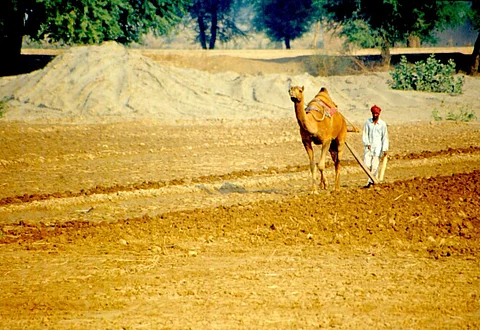

There are disturbing signals of a potential meltdown of the country’s biggest employer and also food producer as the southwest monsoon enters its second week of the second month.
Kharif sowing was down 15 per cent by July 7, in comparison to last year for the same period. Altogether, farmers didn’t sow in 6.3 million hectares (Ha) of farms.
Sowing is picking up at snail’s pace, with the first two weeks of June reporting insignificant activities. In a normal season, the main crop of paddy would have been transplanted from the nursery by this time.
Planting is the most labour-intensive phase of agriculture, particularly for paddy crops. The sluggish sowing progress is already reflecting in the overall unemployment situation of the country.
Mahesh Vyas, managing director and chief executive of Centre for Monitoring Indian Economy Pvt Ltd (CMIE), has flagged dire consequences in his analysis of the unemployment scenario in June.
“Rains were 32 per cent below normal during the first fortnight (of June). This could have slowed the deployment of labour to the fields. The agricultural sector shed nearly eight million jobs in June. These were mostly in plantations,” Vyas wrote while releasing the CMIE’s latest assessment of the employment situation.
Most of the employment during this phase of the kharif season is for plantation labourers or transplanting from nurseries. CMIE said cultivation could add just four million jobs during June. This was lower than the figures in the same month in 2021 and 2020.
Overall, the unemployment situation in the country was so acute that the CMIE assessment showed people had stopped looking for jobs, or they had quit the labour market.
This happens when one is not hopeful of getting employment and s/he is just discouraged enough to not even seek jobs. Labour force is defined as the sum total of people looking for a job.
In June, the labour force had 10 million fewer people seeking employment. “While about 13 million lost jobs during the month, the count of the unemployed increased by only three million. The rest exited the labour markets. As a result, the labour force shrunk by 10 million in June 2022,” CMIE said.
But what makes the June situation alarming is the fact that almost all the 13 million jobs lost were in rural areas. And most of these jobs were lost in the agriculture sector.
What does this signify? First, the biggest employer — the agriculture sector — is shedding jobs. So, it will have an overall impact on rural income.
Second, the late sowing and potentially low agricultural income means the return on farmers’ investment would be less thus adding to their debt. Usually, farmers make their biggest investments at the time of sowing: Seeds and hiring labourers and also preparing the farms.
Third, and the most troubling, is the fact that a farmer earns more from wage than from cultivation. Thus, the huge dip in agricultural labour jobs in June means that people have not earned anything for a good one month.
That month is also one of the biggest earning months in the five-month agriculture season. This will impact the overall income of the people from farming.
The CMIE latest data shows that the farm labourers were the worst-hit. “While the agricultural sector as a whole shed jobs, people engaged as farmers increased by 1.8 million. Implicitly, the fall in employment in the agricultural sector was among agricultural labourers,” CMIE said.
This could mean that more people have joined farming just being in villages. Many of the farm owners themselves have done the manual work, displacing the usual labourers hired to save cost or just to be engaged.
This vacuum in the job market could be sensed from the fact that in June, the demand for work under the Mahatma Gandhi National Rural Employment Guarantee Scheme had shot up to unprecedented levels.
Some 31 million people sought work in June, on the back of demand from 30 million people in May, Down To Earth reported. The high demand for jobs under the MGNREGA shows that informal workers stay put in villages, unable to find any jobs outside.
However, as government data from the Union rural development ministry points out, the rural wage programme is also not able to meet the demand.
The revival of the rural labour market now entirely depends on the progress of the monsoon and importantly, fast progress in sowing.
Sowing has just begun in many states, as farmers wait till the monsoon progresses after the June deficit phase. But, in July and August, the monsoon also enters into many ‘breaks’. Like in recent years, large-scale crop damages have been reported during such ‘breaks’. What if the monsoon behaves this way this year as well?